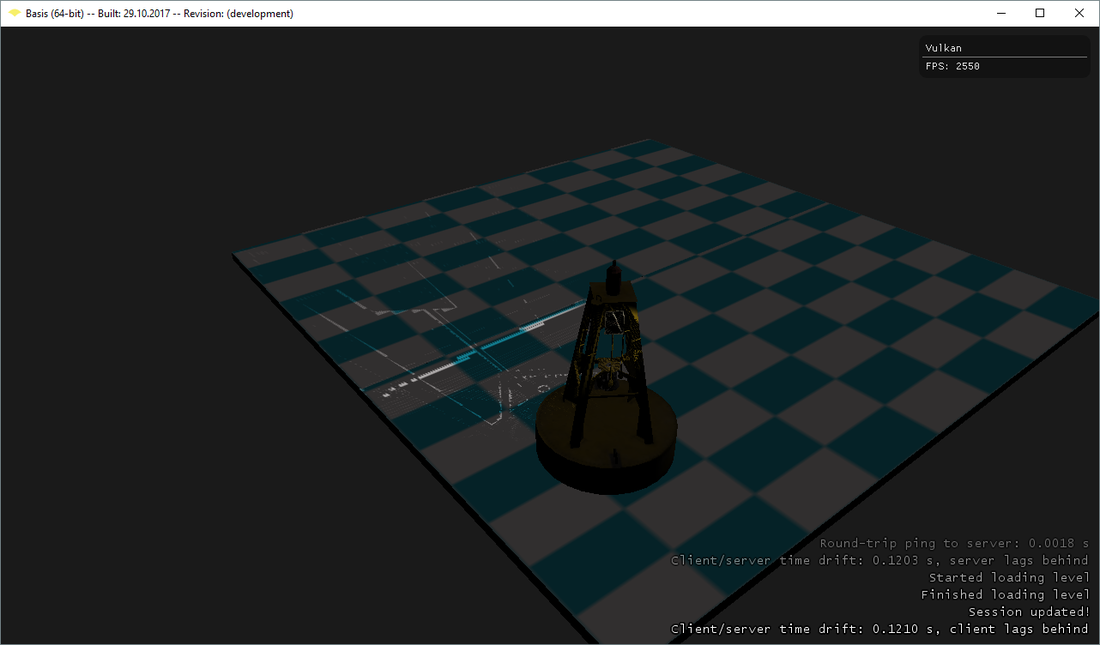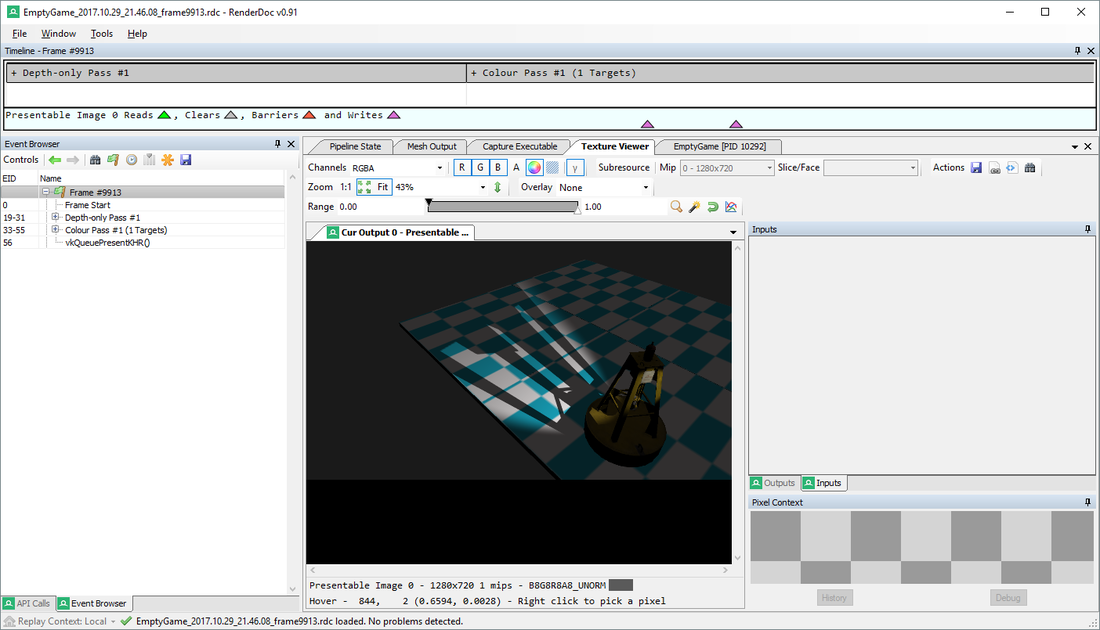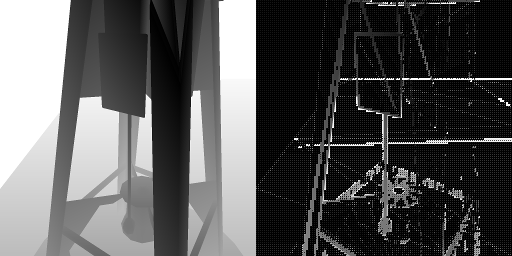Hey guys.
Something weird is going with my Vulkan shadow mapping. I already have it working on DX, and today I finally took the time to implement it in Vulkan. Or so I thought. This is what I see when shining a spot light on a sea buoy model in a test level.
I spent quite some time checking and double checking all values before looking at it in RenderDoc. I verifed that the pipeline state is what it should be and all input and output resources are what I expect. At some point I looked at the texture viewer at the actual output and, lo and behold, it actually renders correctly in RenderDoc. However, it still is broken when rendered by the actual game even with RenderDoc attached and the incorrect result even shows up in the little thumbnail RD generates for the capture. Here you can see it magically working when looked at through the texture viewer:
Any ideas what I might be doing wrong? Anyone recognize the weird artifacts? Any idea why it would show up correctly in RenderDoc?
Cheers!











